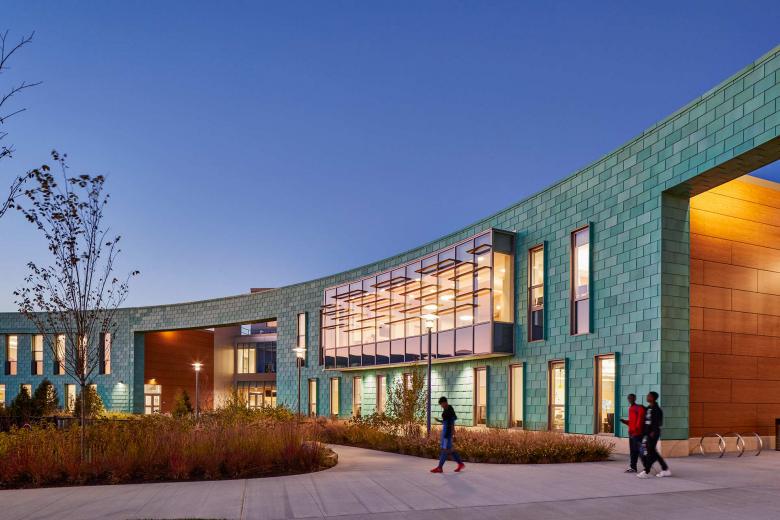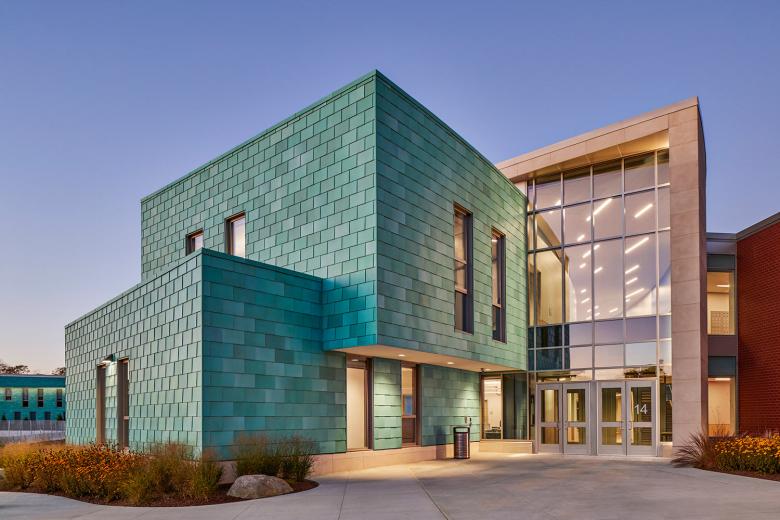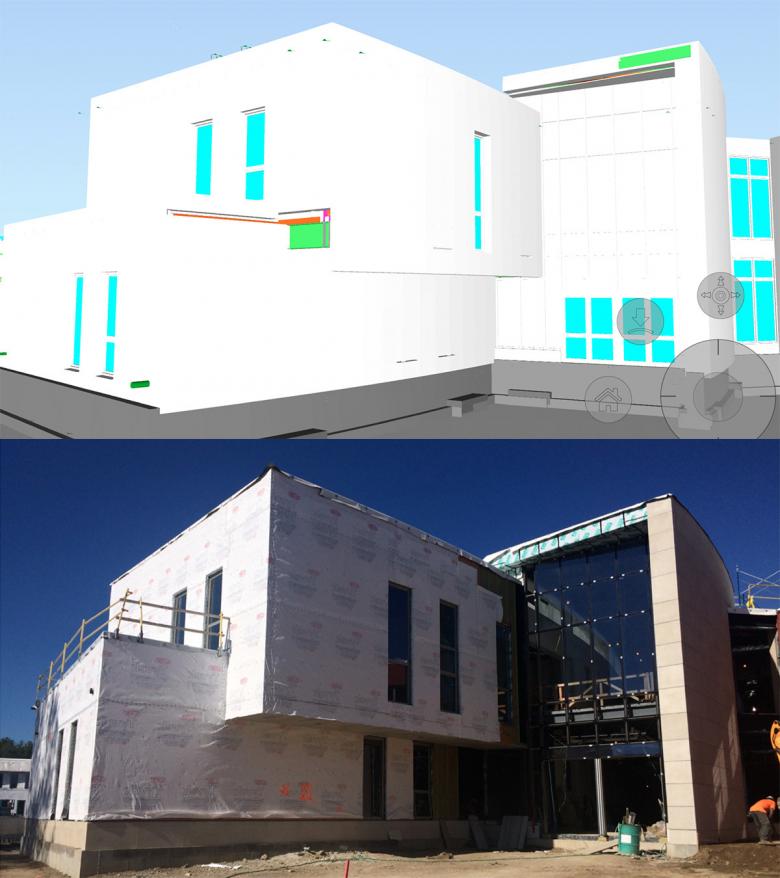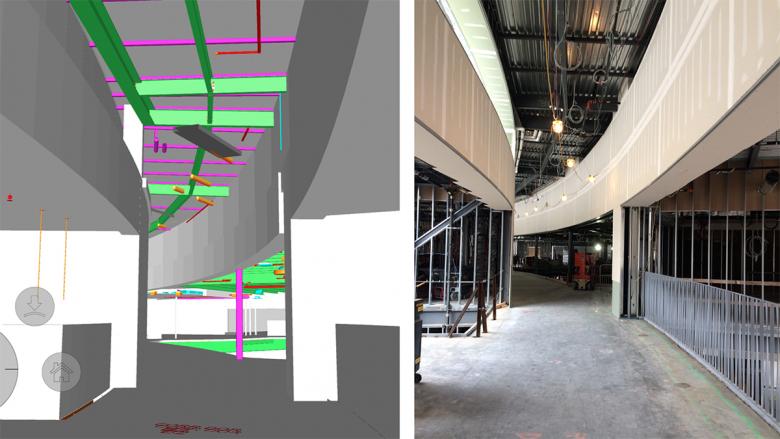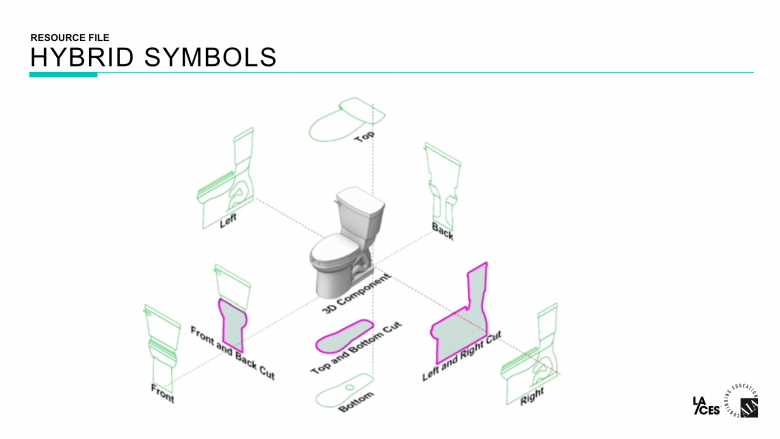23. gennaio 2019
J.F.K. Elementary School & Holbrook Middle High School by Flansburgh Architects (Photo: Robert Benson Photography)
It’s all about efficiency. Efficient and streamlined were oft-repeated words in the presentation Joseph Marshall and Brian Hores of Flansburgh Architects gave at the 2018 Vectorworks Design Summit, as well as in the conversation the three of us had the day before. They use Vectorworks to increase efficiency at Flansburgh while also tailoring the software to the firm's unique needs.
Flansbugh Architects was founded in 1963 as Earl R. Flansburgh + Associates by architect Earl Flansburgh, who practiced in the Boston area for more than 45 years and received the Award of Honor for Lifetime Achievement from the Boston Society of Architects (BSA) in 1999. Flansburgh designed primarily educational facilities in New England, and Flansburgh Architects has continued with a focus on that typology. Yet in recent years the firm, led by four principals, has diversified its output to include specialized facilities (dorms, theaters, police stations, etc.), international schools, and projects for non-profit, mission-driven clients. Marshall, who started at Flansburgh in 2009, the same year Earl died, has played a part in the firm’s new range of projects, working on buildings in Hawaii and Ethiopia. Hores, who joined Flansburgh five years later, is the firm’s BIM manager and is a chair of the BSA Vectorworks User Group.
J.F.K. Elementary School & Holbrook Middle High School by Flansburgh Architects (Photo: Robert Benson Photography)
Just as the architects at Flansburgh Architects had been using Vectorworks software since at least the 1990s, both Marshall and Hores were Vectorworks users well before joining the firm. They brought their deep knowledge of Vectorworks to Flansburgh and have pushed the firm toward BIM, which is sometimes mandated by their institutional clients. New hires will often use software they are most comfortable with, but they move pretty quickly into Vectorworks so they can do everything (modeling, CAD, BIM, renderings) in one piece of software. Accordingly, Marshall described Vectorworks as “an agile program” that has been “the right solution” for Flansburgh. On a typical project they start using the software in the conceptual design phase, modeling programmatic blocks that are the basis for wood massing models. From there they move quickly into Vectorworks, what Marshall described as “nucleus that everything revolves around.”
J.F.K. Elementary School & Holbrook Middle High School during design and construction (Images courtesy of Flansburgh Architects)
As a mid-sized firm with many projects in various stages of design, efficiency is a must. For projects in other states or countries, one architect will carry the project from its early stages to SD (schematic design) or DD (design development) then hand it off to the architect of record. For local and other projects where the firm handles production, teams of two to four will work on the CDs (contract documents), with all of the firm working in Vectorworks. Most of the projects at Flansburgh fall into what’s been described as “Little BIM,” where a Building Information Model is used in the office and shared with consultants. The $100 million J.F.K. Elementary School & Holbrook Middle High School in Holbrook, Massachusetts, which Flansburgh presented at the 2016 Summit in Chicago and has since completed (and certified LEED Gold), took the office into "Big BIM," where Building Information Modeling extends the reach of the technology to the client’s operation of the building. For Holbrook, Flansburgh used their Vectorworks model to produce the construction documents but also renderings for presentations; they shared the model with engineers using Revit and contractors using BIM360 Glue; and construction was coordinated using the model.
J.F.K. Elementary School & Holbrook Middle High School during design and construction (Images courtesy of Flansburgh Architects)
At the three-day Summit in November, Marshall and Hores presented the framework they use across all projects in the office, in which they have adapted a traditional file system to a BIM workflow. Working with the Vectorworks Architectural Support team (what Marshall described to me as “the best part of Vectorworks”), they developed a file structure for templates and resources that streamlined the workflow – in other words, making the architects in the office more efficient. Two add-ons to Vectorworks further increase their efficiency: Solibri for BIM coordination and Twinmotion for renderings. Solibri’s AutoRun feature cuts down on the time it takes to run checks on a model, enabling the architects in the office to spend time on other tasks. Twinmotion uses a game engine to produce realistic renderings that are also quick; the technology also produces animations and allows for quick revisions to model materials based on, for instance, the input of clients.
2D Components for Hybrid Objects (Image courtesy of Vectorworks, Inc. and Flansburgh Architects)
Although Marshall and Hores, both of whom are beta-testers for Vectorworks, said they would love to see the functionality of these add-ons integrated into Vectorworks, they are also excited by some of the 2019 updates as means of increasing efficiency. One is Data Tags, which simplifies the tagging of elements in CDs but also allows the user to customize their appearance. Another is 2D Components for Hybrid Objects, which enables users to control how much detail from 3D models is displayed in 2D drawings throughout a project. And one more is Layer and Class Filtering, which allows users to search for layers or classes rather than scrolling through long lists of them to find one. It’s one of Marshall’s and Hores’s favorite – one of many “I can’t go back now” features Vectorworks continues to develop for its users.
World-Architects is an Exclusive Media Partner for the fourth annual Vectorworks Design Summit, which took place November 4-6, 2018, in Phoenix, Arizona.
